On the 25th of January, 2021, the newly refurbished Antiquarium of Pompeii opens to the public: a museum specifically intended as a permanent exhibition for the finds illustrating the history of Pompeii.
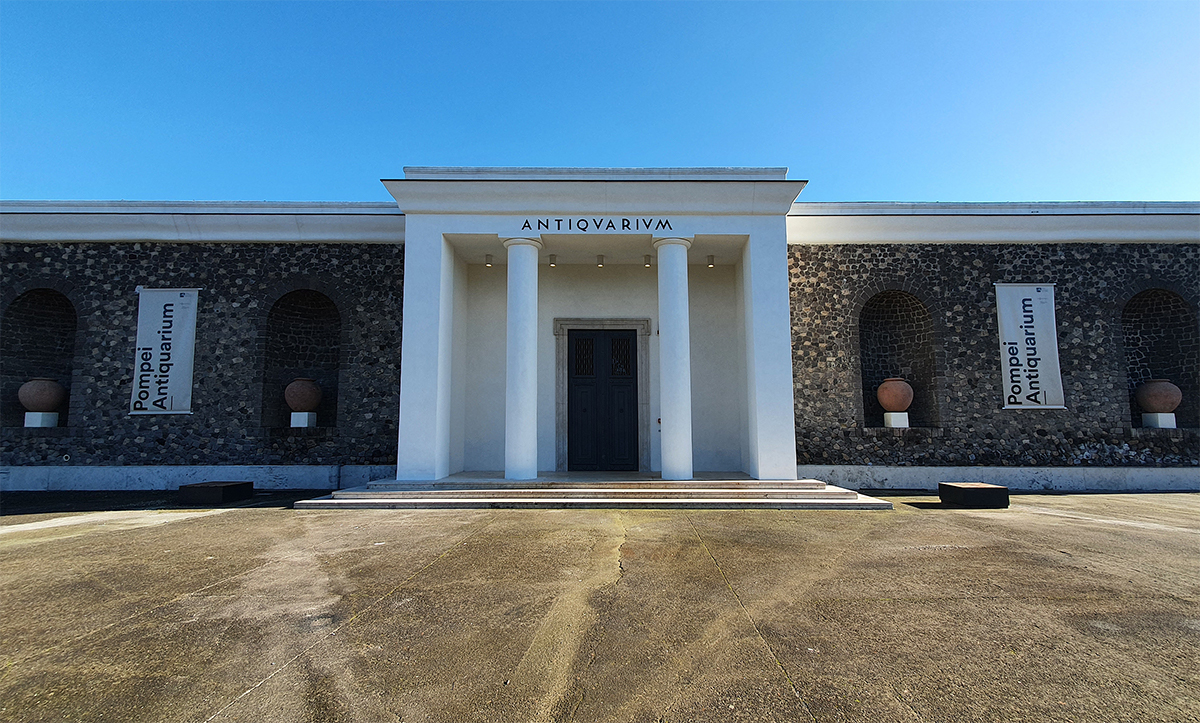 The building has had a chequered history. Inaugurated by Giuseppe Fiorelli in 1873 circa, and extended by Amedeo Maiuri from 1926 , in 1943 it suffered damage from bombing which caused a whole gallery to be destroyed and the loss of several finds. And once again in 1980, due to an earthquake, it remained closed for 36 years.
The building has had a chequered history. Inaugurated by Giuseppe Fiorelli in 1873 circa, and extended by Amedeo Maiuri from 1926 , in 1943 it suffered damage from bombing which caused a whole gallery to be destroyed and the loss of several finds. And once again in 1980, due to an earthquake, it remained closed for 36 years.
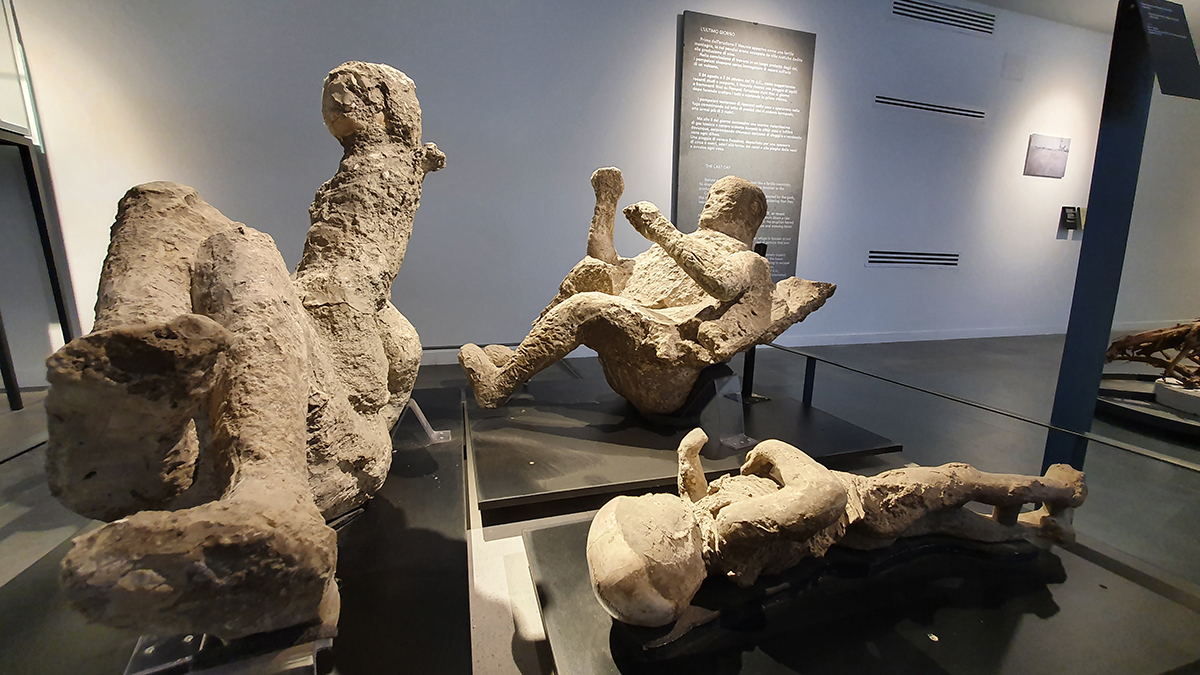 Not until 2016 was it was possible to reopen it with galleries for temporary exhibitions. Today we are restoring to the public a completely renovated area that is reminiscent of Amedeo Maiuri’s first concept of the museum and provides an introductory tour before the actual visit to the site.Using its most significant finds, the tour follows the history of Pompeii, from the Samnite period (4th century BCE) until the tragic eruption in 79 AD, highlighting in particular its indissoluble connection with Rome.Alongside the more famous discoveries from the immense legacy of Pompeii, such as the frescoes from the House of the Golden Bracelet, the silver items from Moregine or the dining room (triclinium) in the House of Menander, exhibited here are the finds from the most recent excavations in the Archaeological Park. These range from the fragments of stucco of First Style, taken from the entrance of the House of Orion, to the hoards of amulets found in the House with a Garden, and on to the latest plaster casts of victims from the villa of Civita Giuliana.
Not until 2016 was it was possible to reopen it with galleries for temporary exhibitions. Today we are restoring to the public a completely renovated area that is reminiscent of Amedeo Maiuri’s first concept of the museum and provides an introductory tour before the actual visit to the site.Using its most significant finds, the tour follows the history of Pompeii, from the Samnite period (4th century BCE) until the tragic eruption in 79 AD, highlighting in particular its indissoluble connection with Rome.Alongside the more famous discoveries from the immense legacy of Pompeii, such as the frescoes from the House of the Golden Bracelet, the silver items from Moregine or the dining room (triclinium) in the House of Menander, exhibited here are the finds from the most recent excavations in the Archaeological Park. These range from the fragments of stucco of First Style, taken from the entrance of the House of Orion, to the hoards of amulets found in the House with a Garden, and on to the latest plaster casts of victims from the villa of Civita Giuliana.
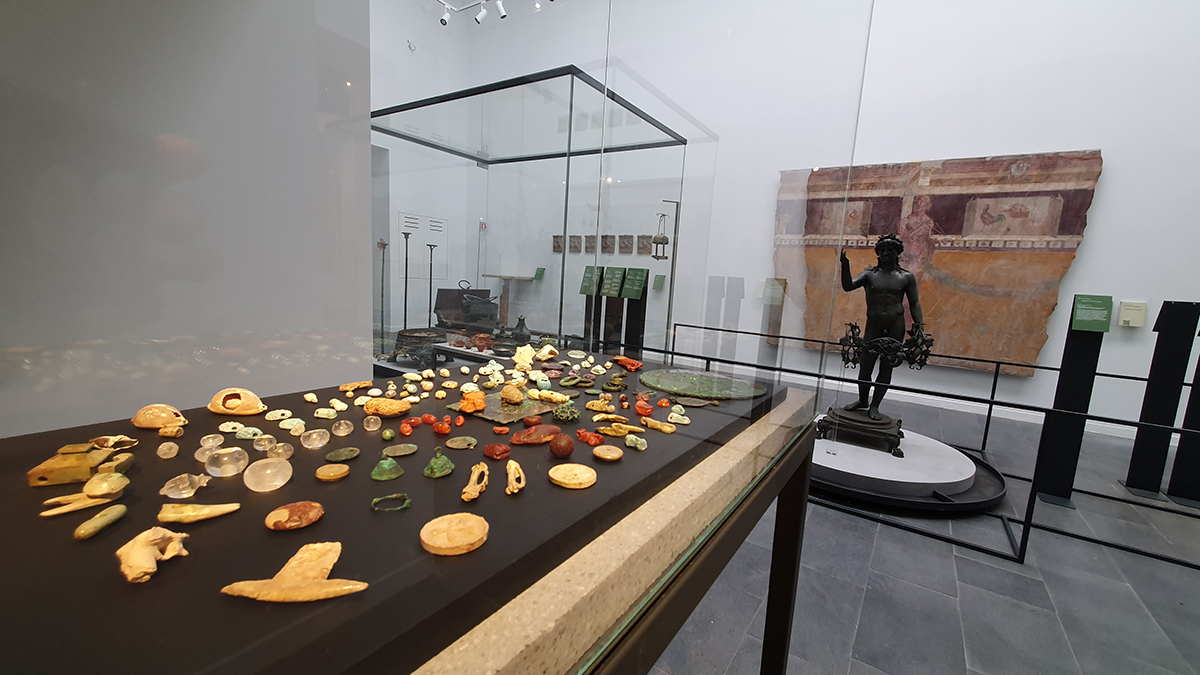 The installation, designed by COR arquitectos & Flavia Chiavaroli, is marked by brilliant lighting, an allusion to the atmosphere of the Antiquarium as envisaged by Amedeo Maiuri. This is partly due to the recovery of space from the original galleries and to the installation of display cabinets from the 1950’s, which have been restored. Electa was responsible for organizing the whole installation.To accompany the reopening of the museum there are two digital communication projects produced by Electa for the Archaeological Park of Pompeii: “A living town”, a series of podcasts in collaboration with PIANO P and Amedeo, a web-bot. There is also an audio narrative, produced in collaboration with MACHINERIA.
The installation, designed by COR arquitectos & Flavia Chiavaroli, is marked by brilliant lighting, an allusion to the atmosphere of the Antiquarium as envisaged by Amedeo Maiuri. This is partly due to the recovery of space from the original galleries and to the installation of display cabinets from the 1950’s, which have been restored. Electa was responsible for organizing the whole installation.To accompany the reopening of the museum there are two digital communication projects produced by Electa for the Archaeological Park of Pompeii: “A living town”, a series of podcasts in collaboration with PIANO P and Amedeo, a web-bot. There is also an audio narrative, produced in collaboration with MACHINERIA.
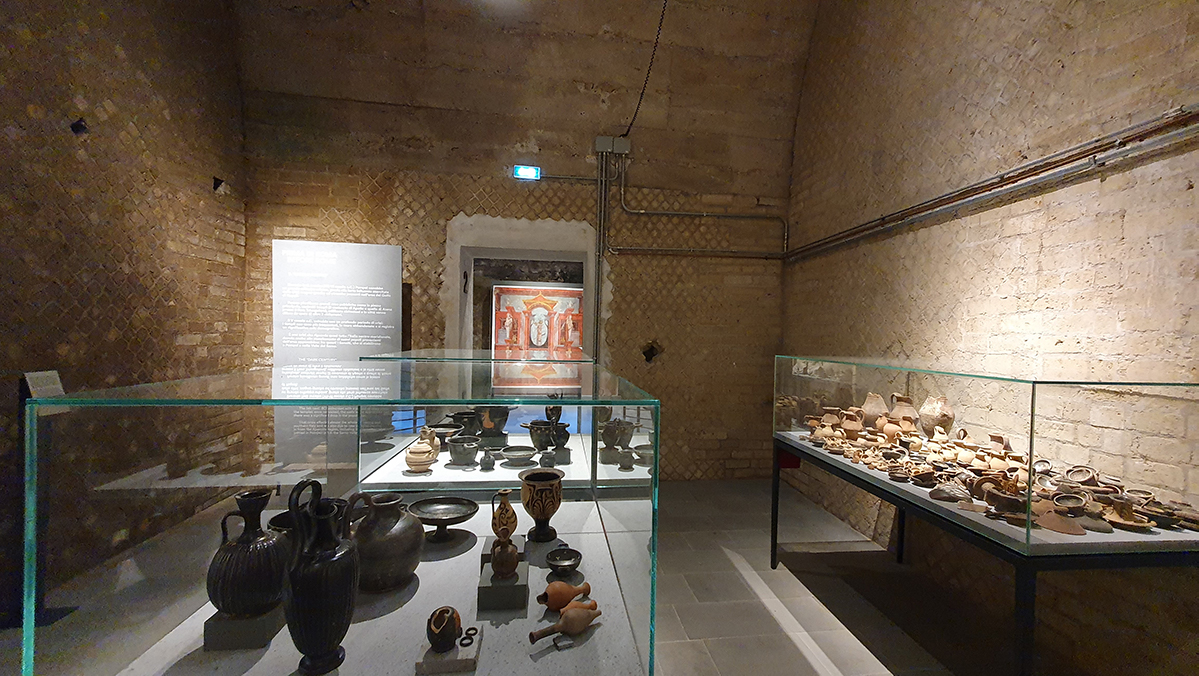 Tour of the exhibition
Tour of the exhibition
SUMMA POMPEIANA The discovery of Pompeii in 1748 leads to a new image of Antiquity, which tells us about daily life. In 1786, overcome by surprise at how everyday that discovery was, Goethe exclaims: “There have bee many disasters in the world, but few have brought as much joy to posterity. I think that it would be difficult to see anything more interesting”. For the first time ever, Pompeii provides the possibility of being in a medium sized town in ancient Italy, inside houses with walls decorated with frescoes that either reproduce simple architectural partitions or recount myths, and with marble tables on which the owner once displayed his own most precious objects. These are biographies of objects and of men whose journeys through life we are able to follow right to their portraits being laid on their own tombs.BEFORE ROME The “dark century” During the archaic period (7th-6th cent. BCE) Pompeii underwent considerable urban development, thanks to the strong influence from the cities of Magna Graecia and the Etruscan towns that were in the region of the Bay of Naples. Extensive public areas such as the main square were levelled off, temples were constructed (the sanctuaries of Apollo and of Athena, near the Triangular Forum), houses were built and the town was defended by a wall that was over 3 kilometres long. The 5th cent. BCE coincided with a period of deep crisis: the temples were not visited, the walls were abandoned and there was a significant drop in the population. That crisis affected almost the whole of central and southern Italy and was also due to new peoples coming in from the Apennine region, including the Samnites, who settled in Pompeii and in the Valley of the Sarno. The phase of alliance with Rome In 308 BCE, two years after its own territory had been destroyed by the Romans, the cities in the Sarno Valley concluded a treaty with Rome: these facts, as told by the Roman historian Livy, provide the first historical evidence concerning Pompeii. Its admission as one of the federated cities coincided with considerable building activity, which is reflected in the renovation of the Doric Temple and re-newed devotion to the cult of Apollo, and especially by the construction of a new surrounding wall, built with the embankment system (ad agger) also used in Rome. From the early decades of the 3rd cent. BCE, the Pompeii we all know began to develop, with its streets – simple beaten tracks at that time – its public buildings and its houses.The “golden century” of Pompeii The 2nd cent. BCE can be called the “golden century” of the town. Following the phases of the Roman conquest in the East, groups of traders from the coastal towns of Campania reached the main ports of the Mediterranean: Delos, Rhodes and Alexandria. Like the other important towns of Campania, Pompeii also renovated and multiplied its own monuments in a few decades. Near the Doric Temple were built a theatre, several temples for foreign cults – including one to Isis of Egypt and a series of buildings intended for the physical, cultural and military education of the local élite, such as the Samnite Palaestra and the domus publica. A short distance away, the oldest thermal bath of the town was built: the Stabian Baths. The sanctuary of Apollo in the Forum was completely rebuilt and around the square, surrounded by shops, large new buildings appeared, inspired by those in Rome: the Temple of Jupiter, the Basilica and, slightly further away the public market (macellum). A small sanctuary was built outside the town, dedicated to Liber Pater [“the free Father”], the god of the fertility of the soil and of abundant grape harvests.
Mercatores Activity by traders from Pompeii in the Mediterranean basin is well-known since the 2nd cent. BCE. Inscriptions by citizens of Pompeii have been found in Delos – the most famous port in the Aegean and a global crossroads for peoples and goods – as well as in the Spanish provinces, where the main activity was connected with mining and the slave trade.Privata luxuria The “model of Rome” was certainly present throughout the streets of the town. Grand houses, sometimes more opulent than those in Rome – where the narrowness of the streets only permitted building dangerously upwards – opened onto streets with high portals. In those houses one could admire the vast solemnity of atria (entrance halls) large enough to accommodate dozens of visitors each day for the greeting ceremony (salutatio) and the sumptuous airy peristyles, where guests were welcomed in banqueting rooms reminiscent of magnificent Greek architecture. Even the middle classes enjoyed peaceful well-being: their houses were smaller but decorated with refinement and some even had private baths.ROME VS POMPEII Obsidio During the course of the harsh and bloody Social War (91-89 BCE), when Rome fought against her Italic allies, Pompeii sided with the coalition of rebels and from ancient sources we know that Silla attacked the town in 89 BCE. Archaeology shows us the signs of this siege: along the north-west sector of the town walls, the holes left by the projectiles hurled from catapults are still visible. A precious set of inscriptions, written in Oscan, documents the defence system set up by the citizens of Pompeii: chosen troops were arranged as defence in each sector of the outer walls and the auxiliaries were grouped together near the main public areas and along the routes indicated by the names of the ancient streets of Pompeii, such as the víu sarinu (Via Salaria) and the víu mefíu(Via Mediana).POMPEIS DIFFICILE EST Colonia Cornelia Veneria Pompeianorum A proverbial saying attributed to Cicero states that it was easier to make a career in Rome than in Pompeii. The creation of a colony of veterans from the army of Silla in 80 BCE, i.e. Colonia Cornelia Veneria Pompeiianorum, changed the life of the town forever. The ruling Samnite class was replaced even brutally by the new arrivals and Pompeii began to look like a Roman city by acquiring buildings in fashion at that time, such as a theatre for musical performances (the Odeion) and an amphitheatre. Along the streets going out of the town, large monumental necropoleis were created, like those in Rome, and the suburbs became full of grand aristocratic villas (such as the Villa of the Mysteries) and a myriad of small farms, and we know what they looked like from Villa Regina at Boscoreale.


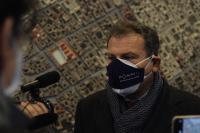
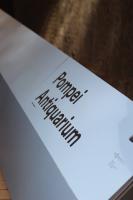
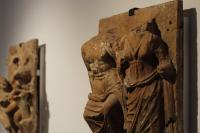

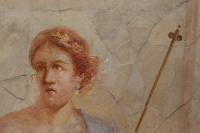
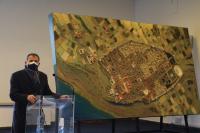


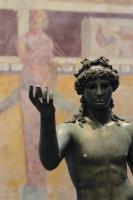

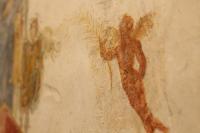



Comments powered by CComment